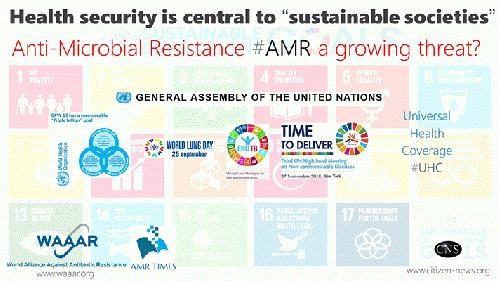
Drug resistance can reverse gains made to fight TB and other diseases
(Image by CNS (Citizen News Service)) Details DMCA
- Video interview of WHO Dy DG is online at: https://youtu.be/4tRCUKe6SyQ
- Video interview of India's head of TB programme is online at: https://youtu.be/mKX9W_SQS_U
(CNS): While reaffirming their commitment to end TB by 2030, the draft Political Declaration in the fight against tuberculosis by governments at the first UN High-Level Meeting on TB (#UNHLM to #endTB) acknowledges that "TB, including its drug-resistant forms, is a critical challenge and the leading infectious disease cause of death, the most common form of antimicrobial resistance (AMR) globally."
Dr Tedros Adhanom Ghebreyesus, WHO's Director General, calls AMR a global health emergency that will seriously jeopardize progress in modern medicine. It is creating superbugs that are making it impossible to treat many previously curable diseases, including TB. While the call for accelerating research and development for new treatments is rightly getting more attention, we are also losing on the efficacy of existing drugs with more and more disease causing microorganisms becoming resistant to them.
AMR already contributes to an estimated 700,000 deaths a year globally, and the the figure could rise to 10 million deaths a year and $100 trillion in lost global productivity by 2050 if nothing is done to stop its spread.
What is AMR?
Dr Manica Balasegaram, of Global Antibiotic Research and Develpment Partnership (GARDP) explains that AMR happens when micro-organisms - like bacteria, virus, fungi, other parasites - undergo genetic changes making them resistant to the medicines that they responded to earlier. This is an evolutionary change but the process can be accelerated due to overuse and misuse of drugs in human, animal and agricultural use, as well as due to lack of infection control.
Key actions to stem AMR
(Note: You can view every article as one long page if you sign up as an Advocate Member, or higher).





